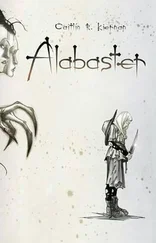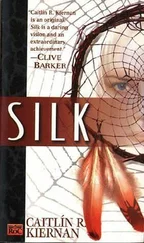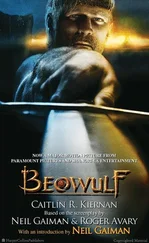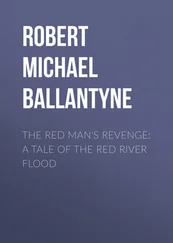Caitlin R. Kiernan - The Red Tree
Здесь есть возможность читать онлайн «Caitlin R. Kiernan - The Red Tree» весь текст электронной книги совершенно бесплатно (целиком полную версию без сокращений). В некоторых случаях можно слушать аудио, скачать через торрент в формате fb2 и присутствует краткое содержание. Жанр: Ужасы и Мистика, на английском языке. Описание произведения, (предисловие) а так же отзывы посетителей доступны на портале библиотеки ЛибКат.
- Название:The Red Tree
- Автор:
- Жанр:
- Год:неизвестен
- ISBN:нет данных
- Рейтинг книги:3 / 5. Голосов: 1
-
Избранное:Добавить в избранное
- Отзывы:
-
Ваша оценка:
- 60
- 1
- 2
- 3
- 4
- 5
The Red Tree: краткое содержание, описание и аннотация
Предлагаем к чтению аннотацию, описание, краткое содержание или предисловие (зависит от того, что написал сам автор книги «The Red Tree»). Если вы не нашли необходимую информацию о книге — напишите в комментариях, мы постараемся отыскать её.
The Red Tree — читать онлайн бесплатно полную книгу (весь текст) целиком
Ниже представлен текст книги, разбитый по страницам. Система сохранения места последней прочитанной страницы, позволяет с удобством читать онлайн бесплатно книгу «The Red Tree», без необходимости каждый раз заново искать на чём Вы остановились. Поставьте закладку, и сможете в любой момент перейти на страницу, на которой закончили чтение.
Интервал:
Закладка:
As we shall see, John Potter’s life would, eventually, become inextricably and fatally linked with the Red Tree, which he first set eyes on, it appears, from a journal entry dated only as August 1716, little more than a year after his first mention of the Hobbamock story. At this time, he notes the presence of an enormous stone believed to have been placed at the base of the accursed oak by the Narragansett and used as an altar. He describes the rectilinear slab as marked by a shallow groove carved into its upper surface, forming a rough circle within which the offerings were placed. This groove, Potter writes, led to a “spout” or opening on the southern edge of the altar stone (which he believed served to drain blood from sacrifices that had collected in the groove). However, though mentioning that the stone was covered with lichen, he fails to make any mention of bloodstains, which one assumes would have been inevitable, unless the Narragansett regularly scrubbed the stone (or Hobbamock’s nocturnal feedings were sufficient to have wiped it clean).
Such “altar” stones are known from other sites in New England, including one from the Mystery Hill megalith site (“America’s Stonehenge”) near Salem, New Hampshire, and another displayed at the Hadley Farm Museum in western Massachusetts. The latter, which is almost identical to that located at the base of the tree, has been identified as a cider press. The Mystery Hill “altar” is suspected of having been carved in either the Eighteenth or Nineteenth Century by local farmers for use in the manufacture of lye soap. Other notable examples of stones quite closely matching that on the Blanchard property may be seen today at Groton, CT, and Leominster and Westport, MA. In each case, the stones are believed by archaeologists to be of relatively recent, non-Native American origin, and to have been used for production of lye, pine tar, or potash, and even the pressing of grapes. Nevertheless, these artifacts have long fired the popular imagination, and appear in such canonical works of pulp fiction as Lovecraft’s “The Dunwich Horror” (1929) and Karl Edward Wagner’s “Sticks” (1974).
In this same entry (see Appendix B for the relevant excerpts from John Potter’s diary in full [A shame Harvey didn’t live long enough to actually write the appendices!—S.C.]) the tree described, along with the “altar stone” perfectly match the tree now identified by locals as “the Red Tree,” and I have little doubt that the two are one and the same. He states that “it has an evil feel about it” and that he has begun to consider cutting it down and having the stone broken up. Obviously, this never happened, and as we shall soon see, John Potter would live to regret not following through with his plan to destroy the tree. Despite his apparent loathing of the tree and his belief that the Narragansetts gathered at the spot to summon evil spirits, Potter built his home, in 1707, well within sight of the oak. Indeed, at the time, one can assume that, the land having been recently cleared by Potter for agriculture, the tree would have been more visible from the house than it is now. Records in the Tyler Free Library, the Foster Preservation Society, and the Providence Athenaeum indicate that Potter’s original house burned in 1710, and that Potter rebuilt directly on the foundation stones he’d lain three years earlier. So, given this chance to relocate his house farther from the oak, he once again acted in a way that, at first glance, seems contrary to his notions and misgivings about the tree. However, I believe that, by studying Potter’s diary, we can arrive at satisfactory explanations for these actions, and that in the beginning they amounted to little more than stubbornness and an unwillingness on his part to be perceived as having been in any way intimidated by native superstitions.
Yeah, okay, enough of this already. My eyes are giving out. Didn’t I say I wasn’t going to hand copy Harvey’s damn manuscript, that I was going to have it Xeroxed? And here I’ve just transcribed about four pages of the damned thing! But, that said, the upshot is that people have been afraid of this old tree (hidden now, out there in the dark beyond my kitchen window) for almost three hundred years. And the stone I lay down on, and where I almost dozed off below those branches, has (or had) a reputation as an altar used by Indians in human sacrifices. I have to admit, reading back over that part gave me just a bit of a shiver, even if I’m most emphatically not the sort of woman who believes in ghosts and Rhode Island vampires and bog monsters.
Oh, speaking of Constance, she came down about five this afternoon, looking refreshed from her nap, and offered to fix dinner for the both of us. I never turn down a home-cooked meal, so long as someone else is doing the cooking. She scrounged about in the kitchen and somehow came up with the ingredients for a couple of cheddar-cheese omelets, with French fries on the side (I had a pack of Ore-Ida frozen shoestrings). While we were eating, she asked about the manuscript pages scattered all over the floor, and I told her about the “altar” at the base of the tree. I said that I wanted to make a second trip out to the tree, as I didn’t recall seeing the groove and spout mentioned by Harvey, and she asked if I’d mind if she went along. Like I was going to say no, right? So, it’s a date. We’re planning to pack lunch and have a proper picnic on the stone, dubious past or no, bloodthirsty demons or what have you. Okay, so maybe it’s not a date, strictly speaking, but at least it’s not me sitting here on my ass, smoking too much and drinking lousy beer, moping about the novel that I’m not getting written while I obsess over Dr. Harvey’s manuscript.
The best-laid plans of mice and men and bored writers, as they say. Or as they ought to say. The heat was exceptional today, the sun like a searing hole punched into the sky leading straight up to Hell. By one this afternoon, the mercury had reached 93F, and Constance and I decided to put our plans for a picnic at the red tree off until another, cooler day. The meteorologists (whom I’ve noticed are even less reliable here than back in Atlanta) are promising cooler weather soon. I suppose the proximity to the sea complicates matters, adding a greater degree of uncertainty into that already dubious undertaking of predicting the future course of cold fronts, high- and low-pressure centers, the whims of the polar jet stream. But, the long and short of it, the day was dangerously hot, and, in lieu of our picnic, Constance invited me up into her garret to partake of the air-conditioning. The little window unit was hardly able to keep up, what with the hot air rising from below and the sun blasting down on the roof, but the attic was still a far sight better than being downstairs.
Earlier in the day, before the heat got so bad, I’d gone with her up to Foster, to return the rented PT Cruiser. On the way home, she talked, mostly, and mostly she talked about growing up around here. There were questions I’d wanted to ask, about her painting and California, and about what taking classes from Charles Harvey had been like, but I’d kept them to myself. Then, up in the attic, I saw that she hasn’t yet begun painting, which I suppose is hardly surprising. She has begun stretching two canvases (the stretcher bars were Brazilian white pine, she informed me), and the place already smells like oil paints and linseed oil and gesso. She sat on her air mattress, me in a metal folding chair, and we smoked and drank Narragansett and listened to the window unit chug and wheeze and try to keep up with the heat. She has a little portable stereo, and something by Lisa Gerrard was playing on repeat. I can’t now recall everything we talked about, and I won’t try. The stuff two people from different parts of the country talk about. The things two artists working in completely different media talk about. But, there was one thing I wanted to get down here, and as I prepare to do so, I realize that I have developed a certain relationship with this typewriter and the journal I’m using it to keep (instead of writing my novel) — it would appear that I have taken it into my confidence, and I’m going to have to stop leaving these pages lying about where Constance could easily come across them and be tempted to read things I would really rather she didn’t.
Читать дальшеИнтервал:
Закладка:
Похожие книги на «The Red Tree»
Представляем Вашему вниманию похожие книги на «The Red Tree» списком для выбора. Мы отобрали схожую по названию и смыслу литературу в надежде предоставить читателям больше вариантов отыскать новые, интересные, ещё непрочитанные произведения.
Обсуждение, отзывы о книге «The Red Tree» и просто собственные мнения читателей. Оставьте ваши комментарии, напишите, что Вы думаете о произведении, его смысле или главных героях. Укажите что конкретно понравилось, а что нет, и почему Вы так считаете.












